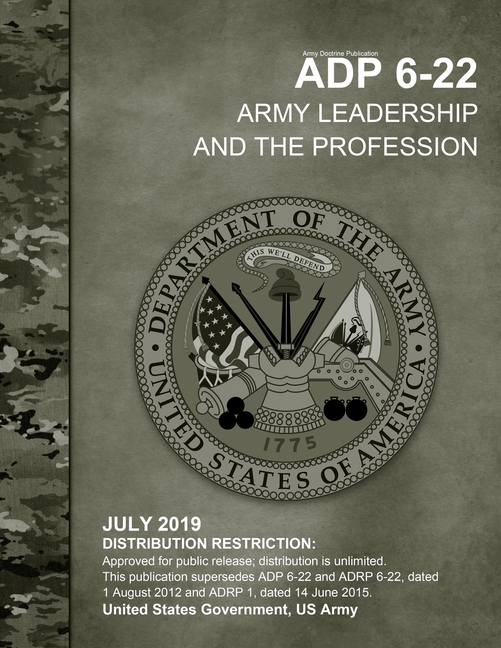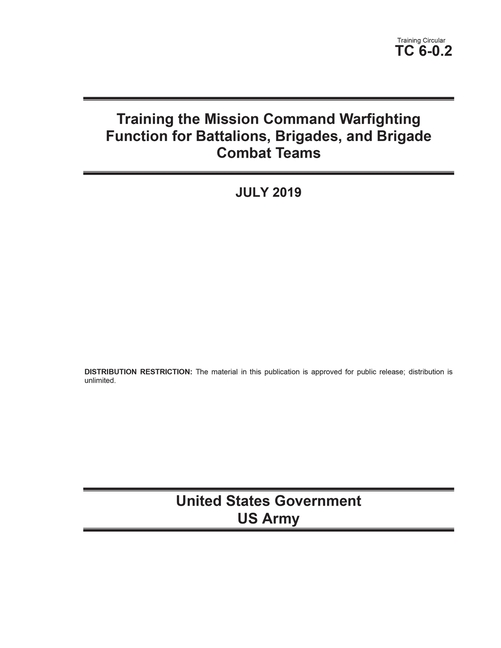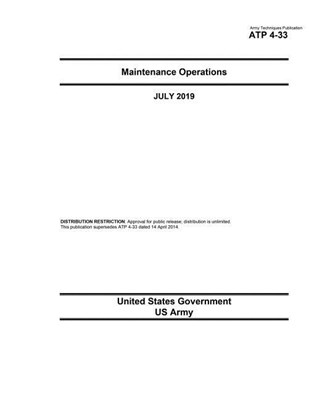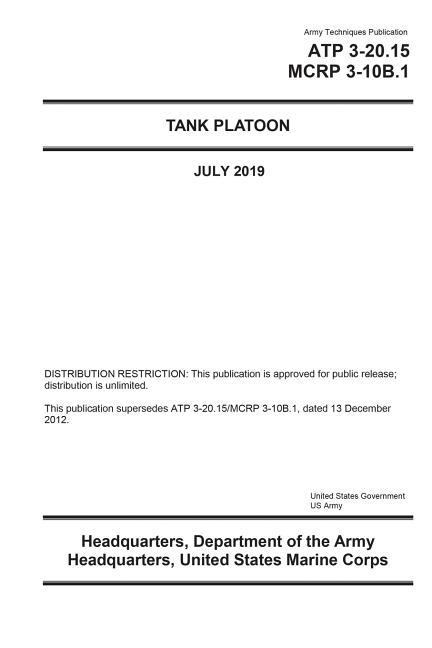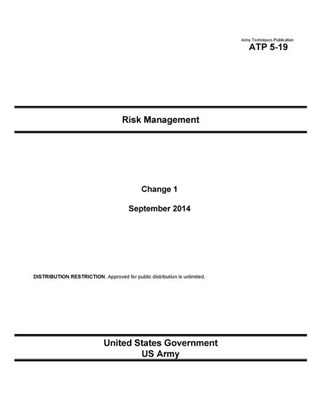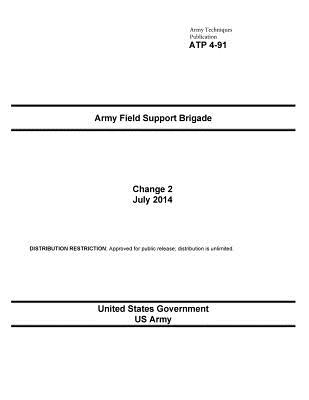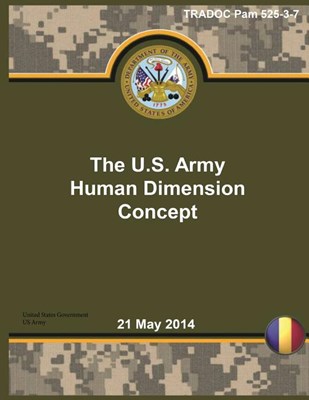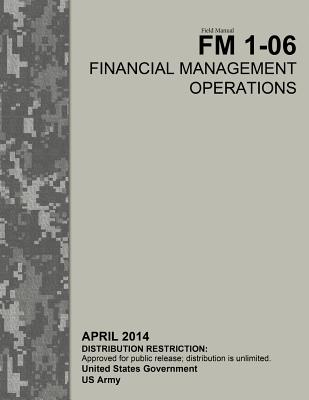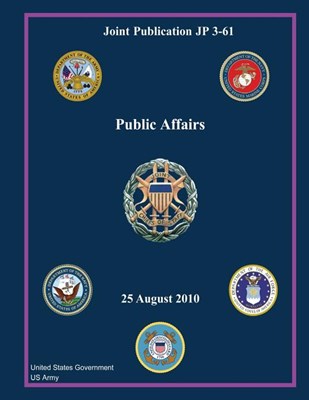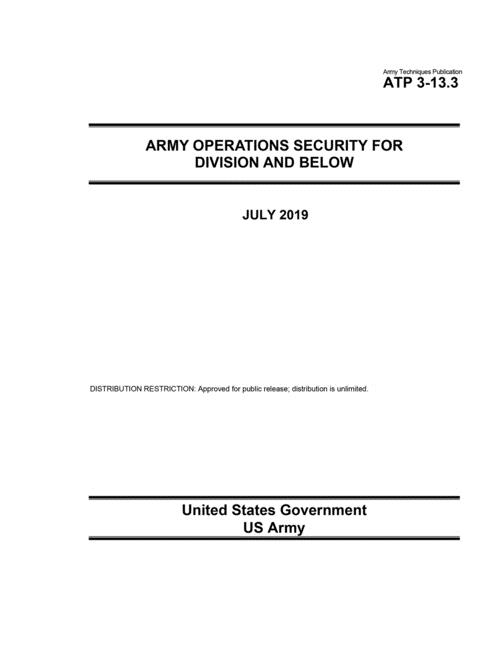
Army Techniques Publication ATP 3-13.3 Army Operations Security for Division and Below July 2019
The purpose of this manual, Army Techniques Publication ATP 3-13. 3 Army Operations Security for Division and Below July 2019, is to provide a doctrinal operations security reference for Army tactical unit commanders, operations security planners, staffs, and unit trainers at division and below. The Army operations security process is a systematic method used to identify, control, and protect essential elements of friendly information.
| Quantity | Price | Discount |
|---|---|---|
| List Price | $13.99 |
Non-returnable discount pricing
$13.99
Book Information
| Publisher: | Independently Published |
|---|---|
| Publish Date: | 08/27/2019 |
| Pages: | 62 |
| ISBN-13: | 9781688890541 |
| ISBN-10: | 1688890548 |
| Language: | English |
Full Description
The purpose of this manual, Army Techniques Publication ATP 3-13.3 Army Operations Security for Division and Below July 2019, is to provide a doctrinal operations security reference for Army tactical unit commanders, operations security planners, staffs, and unit trainers at division and below. The Army operations security process is a systematic method used to identify, control, and protect essential elements of friendly information. An essential element of friendly information is a critical aspect of a friendly operation that, if known by the enemy, would subsequently compromise, lead to failure, or limit success of the operation and therefore should be protected from enemy detection. Traditional security programs protect classified information, but are not necessarily designed to protect essential elements of friendly information. Properly implemented operations security works in coordination with traditional security programs to protect essential elements of friendly information. The Army Protection Program, a management framework to synchronize, prioritize, and coordinate protection policies and resources, highlights operations security as an additional protection task that commanders and staffs must synchronize and integrate, along with other capabilities and resources, to preserve combat power. Commanders designate a member of the staff to serve as the unit's operations security planner. The operations security planner-typically a standing member of the unit's protection working group that brings together representatives of all staff elements concerned with protection- ensures that operations security is considered during the military decisionmaking process and incorporated within the unit's scheme of protection. The operations security planner analyzes unit's information activities, operational patterns and routines, signatures, and other activities that reveal unit-specific operational information and other associated observables. The operations security planner assesses whether such information or indicators could reasonably be observed by enemy or adversary forces known or suspected of conducting surveillance, reconnaissance, or intelligence collection activities directed against the unit. After identifying potentially vulnerable essential elements of friendly information, the operations security planner recommends them to the commander, along with a variety of measures to prevent their compromise. Commanders direct measures and countermeasures to reduce enemy observation and exploitation of friendly actions. These measures include concentrating forces and hiding friendly movements and rehearsals. Additionally, Army divisions and echelons below employ countermeasures such as camouflage, concealment, and decoys as an integral part of unit standard operating procedures. ATP 3-13.3 contains four chapters and one appendix. A brief description of each follows: Chapter 1 discusses the fundamentals of operations security, provides a list of operations security-related terms, and describes commander and operations security planner responsibilities. Chapter 2 describes the operations security process in detail, discusses how the process should be incorporated into operations and planning, identifies each step of the process, suggests several items to consider for operations security guidance, and provides an example of an operations security estimate. Chapter 3 examines an operations security planner's role in each step of the military decisionmaking process. Chapter 4 looks at the tools available to monitor, evaluate, and refine unit measures and countermeasures. Appendix A offers tips and recommendations for developing the operations security appendix of an operational order and provides an example of a completed operations security appendix.


